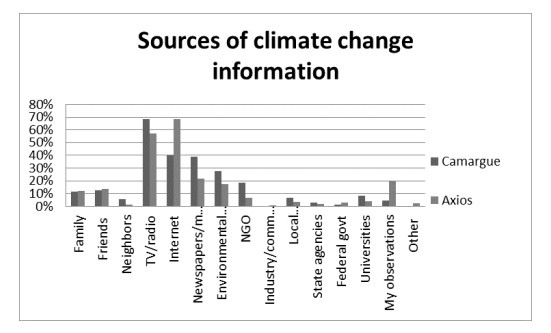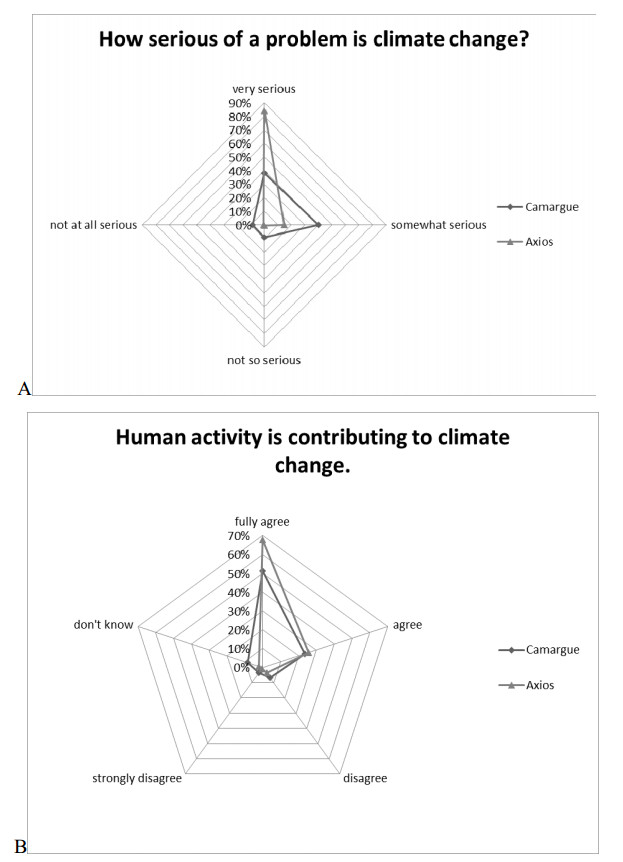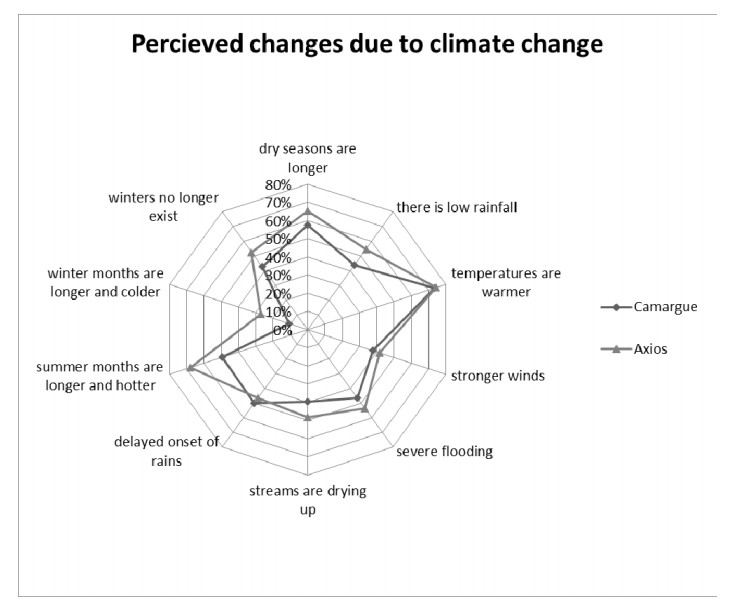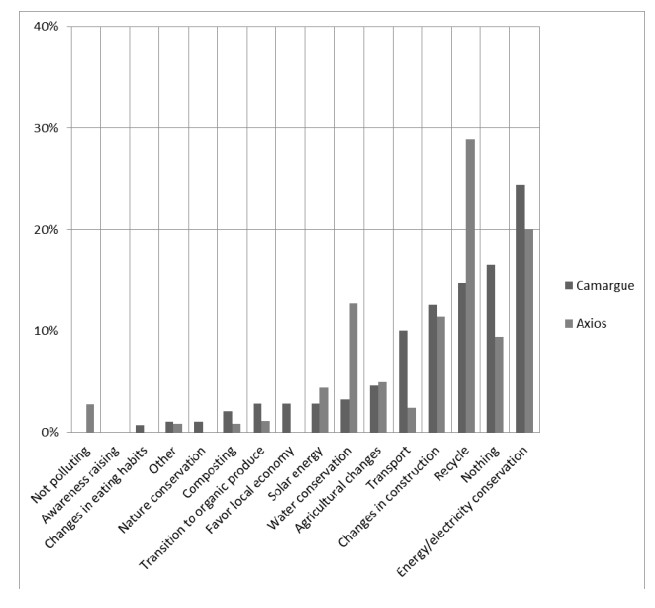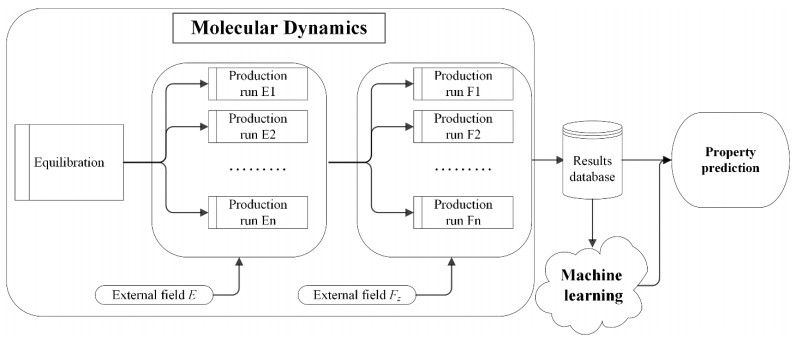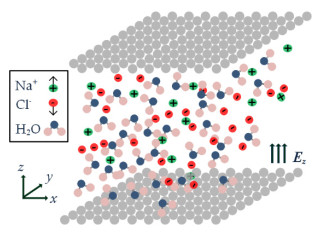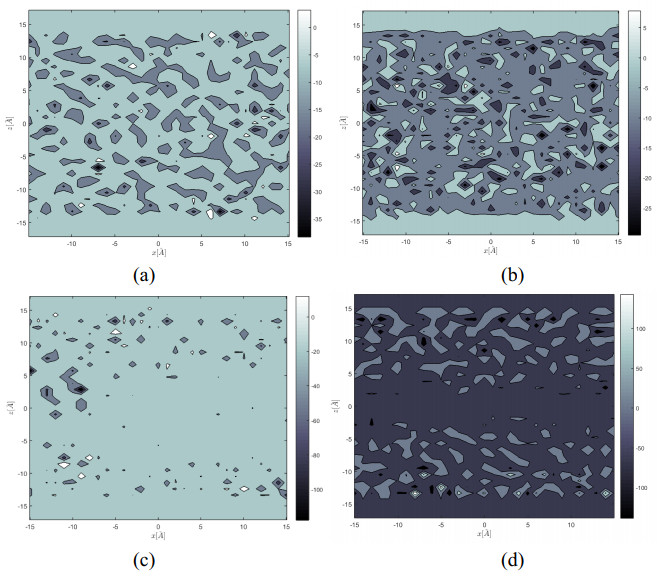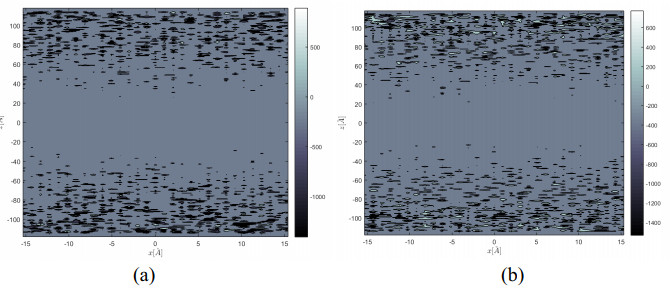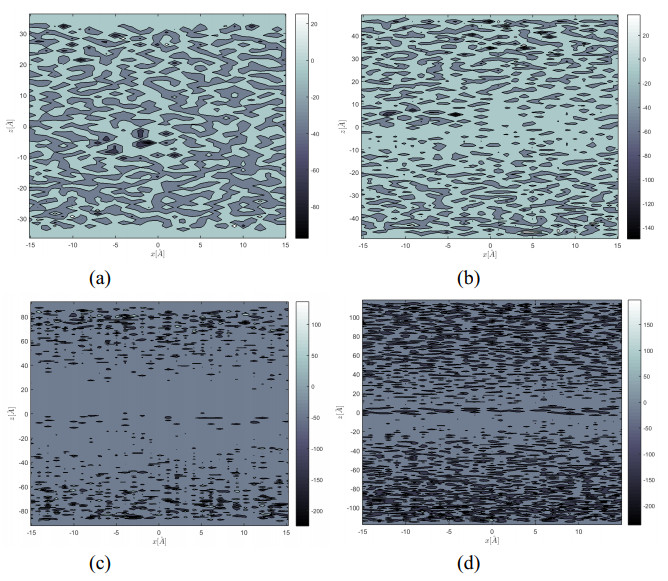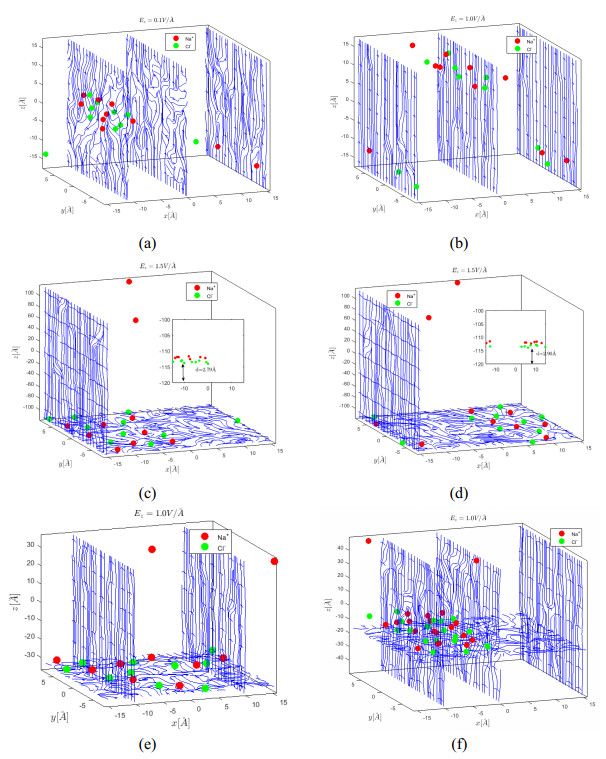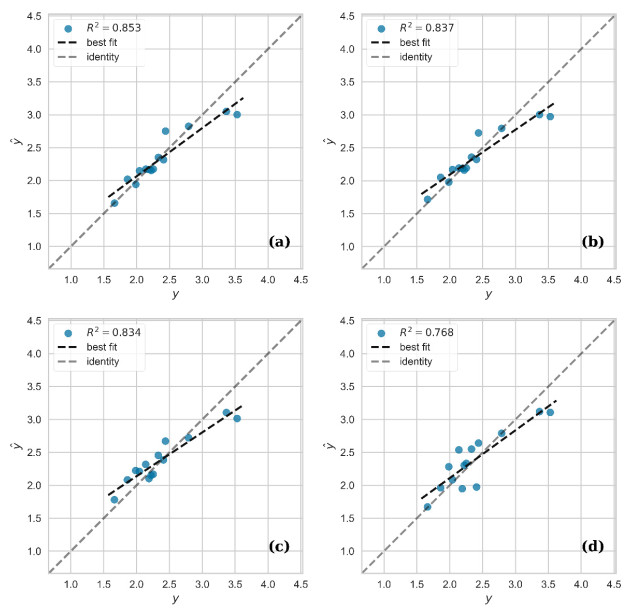1.
Introduction
Most climate change scenarios have shown that different regions and ecosystems are more or less susceptible to rising temperatures, declining snow cover and changing precipitation patterns. River and delta ecosystems have been heavily modified around the world through urbanization, agriculture, damming, channelization, deforestation, mining, industry and fisheries [1]. The changes have been essential for human settlements and development, but have had a dramatic impact on water flows and coastal (terrestrial and maritime) habitats over time [2]. These global changes are expected to be exasperated in the future by climate change, with potential consequences including losses of ecosystem services, economic and social crises and important human migration [3,4].
It has been shown that predisposition to take up mitigation and adaptation strategies, as well as to support and urge governments to do the same, is often related more to the perceived levels of threats as opposed to real risks [5]. The perception of threat may intensify or diminish depending on psychological, social, institutional and cultural factors. This is strongly related to information transmission mechanisms (direct and indirect communication), personal understanding of causes and effects, past experiences, and cultural beliefs [6]. Environmental risk studies have shown that people draw conclusions about abstract phenomena such as climate change based upon their observed and lived experiences [7]. This may cause people to give more validity to personal experiences over official information sources [8]. Research has shown that climate change concern is often motivated by contextual factors including national prosperity, media coverage, local political action and information sources and by individual factors such as political orientation, education, beliefs, and cultural views [9]. All these aspects contribute to the personal perception of risk, and may increase people's willingness to take action to reduce risks related to climate change and to adapt to new conditions [10]. In order to better apprehend how to address climate change in Europe's Mediterranean deltas, this article focused on three questions: (ⅰ) How do the different populations perceive climate change in their deltas? (ⅱ)What are the main sources of information concerning climate change? and (ⅲ) How do the participants integrate climate changes into their current living conditions?
1.1. Europe's Mediterranean deltas
Deltas are wetlands that have been formed from accumulations of river-derived sediments adjacent or in close proximity to the source stream [11]. The main natural factors controlling the evolution of deltas are: (ⅰ) size, morphology and geology of the watershed, coastline and sedimentation basin; (ⅱ) climate, precipitation and river discharge and (ⅲ) hydrology, waves, tides and currents. Natural river sediment discharge in the Mediterranean basin is estimated at approximately 1000 million tons per year. Over the last centuries, human activities have greatly impacted these sediment discharges [12]. Massive constructions of reservoirs have caused ~45% of the sediments to be retained behind dams or extracted from river beds for sand and gravel [13]. Problems in sediment balance lead to coastal erosion, creating one of the most important issues along Europe's Mediterranean [13] coasts. These anthropogenic changes have greatly modified the functioning of deltas creating changes in the existing geology of the coastal area with impacts on human populations and biodiversity [14].
Temperatures in the Mediterranean basin have been estimated as ~1.3 ℃ higher than the end of the 19th century [15]. In addition, low-elevation coastal zones in river deltas are especially exposed to economic and environmental losses due to climate-induced risks from floods, storm surges and salinization of rivers, aquifers and agricultural lands [16]. Delta coastlines are predicted to face unprecedented sea level rise due to global changes, which will in turn increase flooding across the plains and hinder economic activity [17]. The risks to infrastructure and social systems in these deltas require responses in terms of adaptation policies in territorial planning at local, regional, national and international scales [18]. The European Union launched a new strategy on adaptation to climate change in 2013. The strategy includes many different approaches by each member state with a variety of tactics for governance and actions. The objectives are to support the development of national adaptation strategies by member states, to ensure improved decision making through upgraded tools and to mainstream climate change adaptation into European policies [19].
1.2. Perceptions of climate change
Past research gathered from different world-wide studies has shown that 90% of the population believes that there has been climate change in the last twenty years and approximately 30% of this group expressed that climate change affected their livelihoods [20]. A recent study in Nigeria by Egbe et al. [21] demonstrated that although the majority of the population believed that climate change is real, there was much less agreement about what if anything should be done to combat these changes. Recent research in Europe has shown similar findings [7,10]. Climate adaptation is primarily tailored towards agricultural production through irrigation and planting crop resistant species [22], yet the responses made by governments and donors do not always impact the most at risk populations [23]. It is important to note that perceptions of climate change vary geographically as a function of demographics and cultural and ideological factors [24]. A multitude of studies have shown that individual-level factors such as demographic variables and political orientation influence perceptions of climate change [25]. For example rural people are often more in tune with the changing aspects of their local situation and have adapted or put in place different coping mechanisms [26]. Climate change is perceived through personal value systems including past experience, knowledge and measuring the individual benefits and costs [27]. In some cases, it may not be important for people to understand or accept climate change, because the proposed mitigation efforts may create sufficient environmental and/or economic benefits to influence uptake [28]. Understanding public perception of climate change and the uptake of adaptation strategies is essential to develop communication strategies [29] and find appropriate and effective actions [9]. Different models such as the Protective Action Decision Model [30] have been proposed to better identify people's responses to environmental disasters. Considering that previous studies have highlighted the importance of focusing on different scales (local, regional and international) to better address the questions of climate change [31,32], this study analyzed the perceptions of climate change in two European Mediterranean deltas in order to identify the similarities and differences at the local scales and to apprehend how to stimulate adaptation strategies at the local and regional scale that may be necessary for the future.
2.
Materials and materials
2.1. Study sites
This study focused on two European Mediterranean deltas (the Camargue or Rhone delta in southern France and Axios delta in Greece (Figure 1)). The two deltas were selected because they share similar ecological habitats and species, and have comparable levels of anthropisation and direct threats (including erosion, flooding, urbanization and pollution) (Table 1). The two deltas are protected under various national protocols and international treaties including the Ramsar Convention for wetlands of international importance. The rivers in the two deltas have been entirely modified over the past centuries. They have constructed dams and protective dykes, forming deltas that rely on human intervention in order to preserve the existing habitats and economic activities [33,34]. The similarities in the two deltas could be used to promote exchanges and best practices between the sites and to learn from successes and failures. At the same time, it is imperative to identify the contextual differences that could prevent these exchanges and the potential for replication.
2.2. Methodology
A total of 395 people participated in the survey through person to person questionnaire deliveries. The sample size was calculated based on the estimated population size in each delta, taking into account the administrative and geographic delta boundaries. Given that no specific demographic data is available for the populations located geographically within the deltas, we used local key informants to estimate population size based on population statistics at municipality levels in each delta. The confidence level was set for 95% with a 7% confidence interval (Table 2).
The participants were selected randomly through house to house surveys in each delta. Each hamlet or village in both deltas was visited and the participants were selected by requesting one family member in every third house on a given street to participate. Given the high rates of absenteeism in the Camargue, the survey sample was completed with telephone surveys (20% of the surveyed population). The study was conducted in 2017 and the interviews lasted on average between 20 to 60 minutes per participant.
2.3. Survey questionnaire design
The survey questionnaire contained 18 questions with 32 different variables (see the supplementary material). The first section of the questionnaire solicited information on the socio-demographic situation of the participants through nine structured questions (age, gender, professional sector, employment position, geographic identity). This data provided the basic description of the sampled population [38]. The second section sought to identify information sources on climate change ("What are your most important sources of information concerning climate change?"). The third section (4 structured questions) aimed to determine the perception of change in the deltas ("Do you feel that the delta has changed over the last 20 years?", "If yes, what were the most important changes?", "Do you feel that the climate has changed over the last 20 years?" and "If yes, when did you begin to notice a difference?"). We used a 5 point Likert scale (strongly disagree, disagree, don't know, agree and strongly agree) [39] to designate the level of perception of specific changes in the deltas.
Lastly, at the end of the questionnaire, we had two open ended questions ("What actions have you already made in your home or in your work to adapt to climate change?" and "What actions do you plan to make in the future (at home or at work) to adapt to climate change?") to detect the different adaptation mechanisms that are currently being implemented or that could be implemented in the future.
2.4. Data analysis
Data analysis triangulated qualitative data, standard descriptive statistics and bivariate statistical analysis using R Studio. The qualitative data obtained from open-ended questions in section 4 of the questionnaire was analyzed by coding and grouping similar responses [40]. Standard descriptive statistics were utilized to define the perception of climate and global change in each delta and for the both deltas combined (sections 1, 2 and 3 of the questionnaire). The bivariate statistical analysis (Spearman Test and Principal component analysis) crossed the socio-demographic data (section 1) with the perception of climate change from section 2 of the questionnaire.
3.
Results
Out of the 395 responses, there was a slight bias for female participants (Females: 56%, Males: 44%) (Table 3). The majority (72% of the participants) were working aged (between 25-64 years) with a marginal participation of retired (18%) and young professionals (10%). Education levels of participants in each delta were significantly different, the Camargue participants claimed higher formal educational levels (49% of the participants from the Camargue completed a University degree compared to 31% in the Axios Delta).
Each of the participants identified their three main sources for climate change information and the responses were coded into 15 distinct categories of information sources (Figure 2). Television and radio were the most important information sources in both deltas with 68% of the participants from the Camargue and 57% of the participants from the Axios delta using this source of information. The second most frequently stated information source was newspapers (39% in Camargue and Axios delta). The internet was also identified as an important source of information in the Axios delta (68%) and Camargue (40%). Local, State and Federal government agencies were least cited as sources of information in both deltas.
The majority of participants in both deltas (over 75% agreement) perceived that there have been global changes in the delta over the last 20 years, and over 80% agreed that there was climate change (85% agreed in the Camargue, 91% in Axios delta). A large majority of participants (c. 80%) from both deltas expressed agreement "that climate change was a very serious to somewhat serious problem" (Figure 3A) and that "human activity was a contributing factor" for climate change (Figure 3B).
The statistical analysis showed significantly positive correlations in the Axios delta for the degree of severity of climate change (0.42) and that climate change is caused by humans (0.19). On the contrary, in the Camargue, there were significant negative correlations for the degree of severity (-0.4) and that climate change is caused by humans (-0.1).
The participants conveyed that climate change could be felt in a variety of ways in their deltas. Participants from both deltas highlighted that the "temperatures are warmer" (73%), "dry seasons are longer" (57%), and "summer months are longer and hotter" (49%) (Figure 4).
The responses to the open-ended question "What changes have you made to adapt to climate change" were coded into 15 categories: changes in construction (including using improved materials/techniques), changes in transportation (including reducing displacements, using alternative types of transport, improved vehicles and carpooling), changes in eating habits (including buying more local products, respecting seasonality of products, eating less meat), organic (choosing to produce or buy organic products), recycling (plastics, paper, glass and reusing objects), energy conservation (including using led bulbs, using renewable energies), water conservation (including using less water for the household), favor the local economy (buying local products), agricultural changes (including reduced tilling, using rain water for irrigation, changing crop varieties), solar power (installation of solar panels for heating water and electricity), compost (using compost techniques or chickens to reduce food wastes), conservation (engaging in some type of nature conservation activity), not polluting (disposing of wastes appropriately and trying to reduce consumption), awareness raising and nothing (Figure 5).
The participants in both deltas shared similar responses to changes in practices, favoring activities such as conserving energy (24% in Camargue and 20% in Axios delta), recycling (15% in Camargue and 29% in Axios delta), and changes in constructions/infrastructure (13% in Camargue and 11% in Axios delta). The Camargue participants also highlighted altering their transportation methods (10%) while water conservation (13%) was more frequently expressed in the Axios delta. In the open ended question "what actions do you plan to take", there was no clear action that the participants planned to make in the future in either delta. There was however a general agreement that local and national governments should enhance their responsibility by putting in place policy and implementing mitigation actions for climate change.
4.
Discussion
It is important to understand people's perceptions about climate change because it could potentially increase the public's willingness to make changes and to accept public policy measures [9]. Similar to Kim and Wolinsky-Nahmias [41], we found that public concern about climate change is very high in both surveyed deltas. This supports previous research indicating that inhabitants of coastal zones are highly informed and concerned about climate change [10] and shows an increase in concern from former studies in southern Europe [42]. The similarity in perception at a regional European Mediterranean scale is conform with previous work by Poortingua et al. [25] demonstrating the importance of regional analysis at a European scale. In addition, we showed that the participants in both deltas perceived that climate change was caused by human activities. Yet as Lee et al. [43] point out, concern is not the only factor that could lead to change or policy implementation. Substantial progress in climate change mitigation necessitates public support of climate change policies. Public support and eventually behavior change is especially relevant as it could have possible economic costs and potentially reduce living standards. Considering the multitude of factors that contribute to the acceptance of mitigation measures and the likelihood to make concrete changes, it is important to understand the barriers existing at the local scale. The barriers often associated with environmental behavior change are lack of knowledge, existing or previous behaviors, lack of incentives (external and internal) and insufficient feedback on change [44]. These barriers need to be taken into account in order to increase mitigation acceptance and uptake.
Similar to climate change trends and scenarios from previous scientific studies [4,45,46], the participants noted increased temperatures (in spring, summer or year around) and decreases in hydrological flows and/or precipitation. However, the participants did not identify increased intensity of rainfall in the Camargue or increase in extreme temperatures in the Axios delta. This is contrary to previous studies on perceptions of extreme weather events where participants tended to remember extreme events and relate them to climate change [47]. Despite the lack of reference made to extreme weather (temperatures or precipitation), the participants' perceptions were in line with scientific trends which could indicate higher levels of knowledge about climate change and reduce this barrier, inciting environmental behavioral changes.
There seems to be a common confusion in both deltas between climate adaptation and climate mitigation. Climate adaption is the change(s) made in response to the actual or anticipated impacts of climate change whereas climate mitigation is the action(s) aimed at reducing climate change [48]. The only identified climate adaptations that were declared in our survey were concerning agricultural changes and changes in construction (in both the Camargue and Axios delta). The other declared changes were mitigation actions, with energy conservation and recycling being the most important activities. These results coincide with the national and international policy focusing on mitigation over climate adaptation [48].
Despite the fact that the majority of the participants claimed to undertake some type of adaptation actions, the actions were limited. The limited action could be in part due to implicatory denial when people minimize the moral, psychological or political implications of an action [49]. The phenomenon of climate change might be acknowledged, but the way that it is perceived can cause the participants to assume that their individual action may not be useful or that the situation is so far advanced that no action needs to be taken [50]. Bain et al. [28] suggest that it is necessary to move beyond knowledge and acceptance of climate change to emphasize two co-benefit types: development (including economic and scientific advancement) and benevolence (focusing on morals and caring communities). These co-benefits are likely to work across scales to motivate public, private and financial engagements to address climate change. Our study suggests that although the participants perceive that climate change is important and that they are undertaking some activities to adapt to these changes, it is important that more political action be taken at a local and regional scale to overcome the barriers inhibiting further actions. Given the heterogeneity in climate change adaptation and climate change mitigation, it could be valuable to correlate these current changes with political and economic climate change strategies in each site. This information could increase our understanding of why certain activities are more common in some areas (such as changes in transportation in the Camargue and water conservation in the Axios delta) and could provide insight into the motivating factors invoking further changes.
Considering that the participants in our study are already convinced that climate change is real and that it is human induced, it becomes imperative that communication strategies for climate change mitigation take on a new framing. Baumer et al. [51] suggest interventions that focus on frame-invoking words may encourage new reflection and increase policy action. In order for these messages to be effective, they must be transmitted by appropriate information sources [52]. Given that the most cited information sources in both deltas was based on mass media combining a large range of individual sources (different television and radio stations and internet sites), the quality and content of the messages are quite diverse and could have an impact on the acceptance or rejection of different measures [53]. A site specific approach entailing the use of trusted information sources along with adapted communication tools [52,54] is strongly recommended in order to increase efficacy and to incite behavioral changes and practices. The results of our study show that governmental organizations (local, regional and national) are the least used information sources in both deltas. This is a significant barrier to successful climate change mitigation and adaptation. Most climate change policies need public support and more governmental communication using a range of strategies is recommended to increase mitigation and adaptation policy acceptance [55]. This support will be more likely if the strategies for climate change are adapted to the unique differences across cultures and nationalities [10].
There have been some findings that indicate that higher education and socio-economic status give people an increased sense of control and decreases their risk perceptions; however, similar to van der Linden [56] our study did not find any correlation between age, education and risk perceptions of climate change. Our study supports previous research [25,44,57] indicating that although there are many commonalities concerning climate change and climate change perceptions, the socio-cultural factors of specific sites are extremely important to understand in order to promote more effective mitigation efforts and uptake. Using an interdisciplinary approach integrating environmental, communication and psychological methods could be a step forward to improving climate change mitigation and acceptance in the future [58].
5.
Conclusions
This study has demonstrated many similarities related to the perception of climate change in two European Mediterranean deltas. There was an overwhelming perception that climate change is happening and the change is attributed to human causes. The perceptions of climate change coincide with most scientific climate change scenarios, demonstrating a high level of awareness about climate change by the local population. Despite this recognition, the local populations in the surveyed deltas have taken little action to adapt to or mitigate against climate change. We recommend that future studies be implemented researching action uptake and behavioral changes related to climate change by triangulating political science, communication and ecological methods. This information could increase our understanding of why certain activities are more common in some areas and could provide insight into the motivating factors invoking further changes. In order to better prepare the future, it is important that climate change adaptation messages move beyond global trends and scenario planning in order to focus on climate change mitigation and adaptation measures that are customized to each local context. This change in methods requires the development of new and site specific communication that effectively encourages actions and policy acceptance. Given that the information channels are different in each local context; it is imperative that the messages are transmitted through trusted information sources specific to each site. The role of local, regional and national governments as information providers is currently underutilized in both deltas. In order to make the transition from climate change policy to climate change actions, the government institutions should use an interdisciplinary approach to improve their communication strategies in order to increase policy uptake and acceptance in the future.
Acknowledgements
This study was funded by the Foundation Tour du Valat, Foundation Pro-Valat and Provence Alpes Côte d'Azur Région. We would like to thank Parul Rishi for her reflections on the methodology of the study. We would also like to acknowledge Styliani Anagnostou and Sultana Tsompanoglou, guards of the Management Authority, for conducting the survey in the Axios delta and Loïc Willm for his help with the graphics.
Conflict of interest
All authors declare no conflicts of interest in this paper.
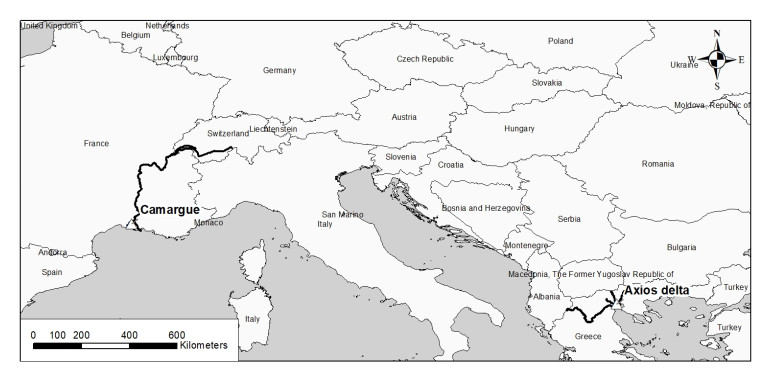









 DownLoad:
DownLoad:
